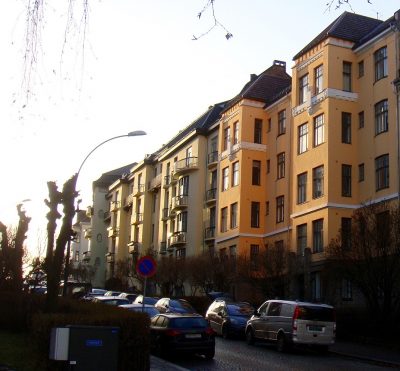It’s official: Average residential real estate prices in Oslo rose 22 percent in 2016 and fewer housing units are currently for sale than ever before. That means the prices of homes in the Norwegian capital are likely to rise even higher in 2017, and some claim city government officials have contributed to a growing affordability problem.

As real estate brokers headed into the New Year, they’re actually sounding alarms themselves over the incessant rise in housing prices. Even though they profit from higher prices, because of their commission-based compensation, the state real estate brokers’ federation (Norges Eiendoms- meglerforbund) fears strong new price growth in Oslo. Purchasing power may ultimately diminish, and that’s not healthy for the market.
Sellers are still getting high prices because most Norwegians still have solid personal finances, “many have inherited property and money and built up their own capital over the years,” Terje Halvorsen, general manager of DNB Eiendom and board leader of the industry group Eiendom Norge, told Norwegian Broadcasting (NRK). “But over time, it’s not sustainable for housing price growth to be so much greater than wage growth.” The latter is now running at around 3 percent nationwide.
Carl O Greving, chief executive of the brokers’ federation, told NRK that he thinks the only thing that might hinder more strong price growth in the housing sector would be some form of “external shock” to the Norwegian economy. As long as the Norwegian economy and purchasing power remain steady and interest rates stay low, prices will “continue to rise for quite a while,” Greving said.
‘Extreme’ levels of housing appreciation
Halvorsen characterized the rate of housing price appreciation in Oslo as “extreme” and some point the finger at city officials who also worry about the lack of affordable housing for young first-time buyers who lack parental support. Not only is the homebuilding regulatory process lengthy and “too complicated,” according to developers, the City of Oslo itself has been active in the housing market and driven up prices in bidding processes.
Newspaper Dagens Næringsliv (DN) reported just before Christmas that the City of Oslo, through its public housing agency Boligbygg Oslo KF, bought 252 housing units in 2016 for use as homes for people with special needs. The city paid a total of NOK 869 million in the red-hot real estate market for all the units. In one transaction, the city paid NOK 49 million (USD 5.7 million) for a building with 10 apartments on Wellhavens Gate in the downtown portion of Oslo’s fashionable Frogner district.
In several cases, officials have sold housing units on the city’s east side and bought units on the higher-priced west side. The goal, they say, was to avoid having too much subsidized housing in certain areas and increase the inventory in higher-end markets. The majority were located in Frogner and other affluent west-side neighbourhoods.
City ‘pushing up prices’
Christian Dreyer, chief executive of Eiendom Norge, told DN that the city’s housing purchases “definitely” have contributed towards pressing up prices in certain districts. “A buyer who invests nearly a billion kroner in a limited area absolutely contributes to pushing up prices,” Dreyer said.”When more than 40 percent of the units the city has bought are located in Frogner, it will lead to extraordinary pressure on the market.”
Magnus Segtnan Thun, who’s handled many of the purchases on behalf of the city, claimed that “we have also sold 50 housing units in Gamle Oslo, Sagene and Grünerløkka, so we have contributed something to the market, too.”
The city’s shopping spree was fueled largely by a perceived need for housing for refugees. Expectations of another influx of asylum seekers this year did not materialize, but Boligbygg went ahead and used up its purchasing budget of nearly NOK 900 million anyway. Dreyer thinks the timing of all the purchases at high-prices was unfortunate. Real estate analyst Mari O Mamre also expressed concerns. “I have spoken with many who have been up against the city in bidding rounds for (small) two-room apartments,” Mamre of the firm Ny Analyse told DN. “That’s a segment where there’s a shortage of housing units, and there the city contributes to driving up prices.”
Thun defended the purchases. “Our mandate was to acquire housing for people who need a roof over their heads,” he told DN. “Some consider our activity in the market as unfair, but then they should think about what the housing will be used for.” He and his team have no plans to stop buying housing units on Oslo’s west side, where prices average NOK 93,147 (USD 10,800) per square meter, compared to NOK 54,159 at Alna on the city’s east side. The City of Oslo has already set aside NOK 2.7 billion for more housing purchases over the next four years.
newsinenglish.no/Nina Berglund

